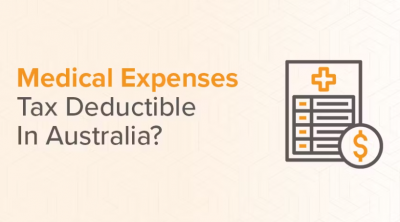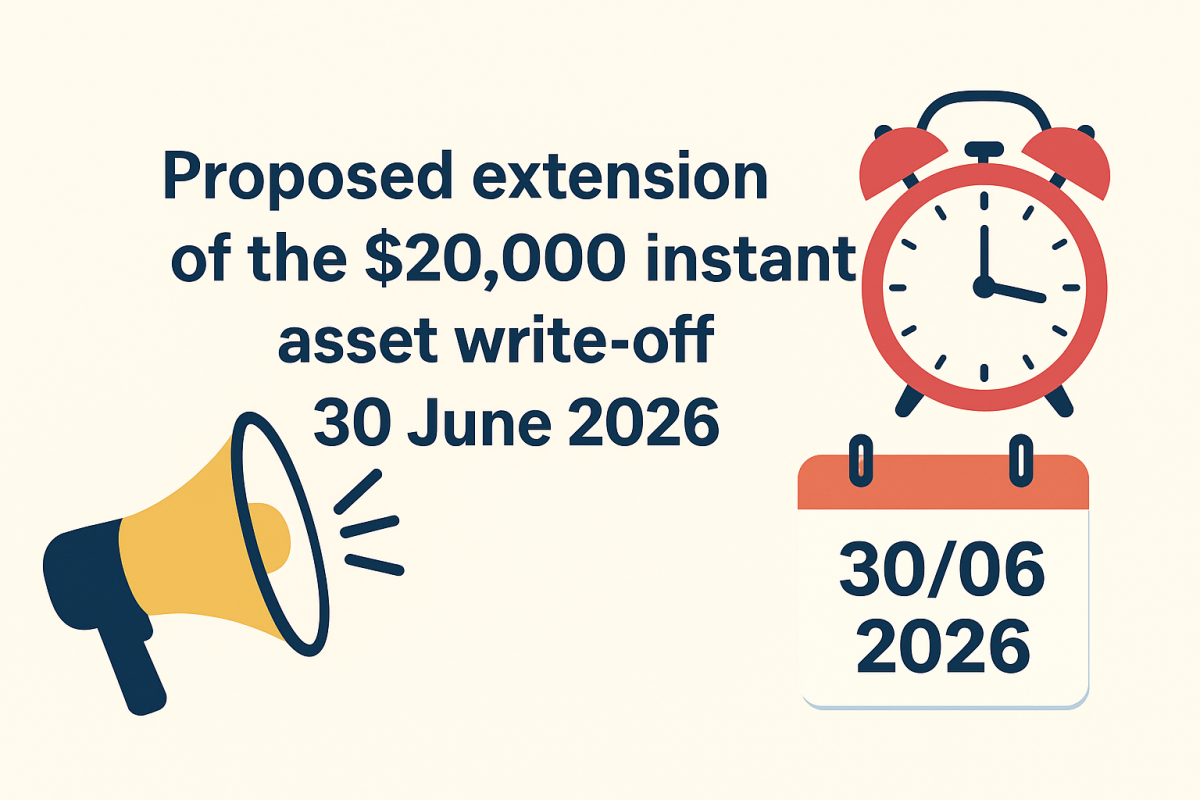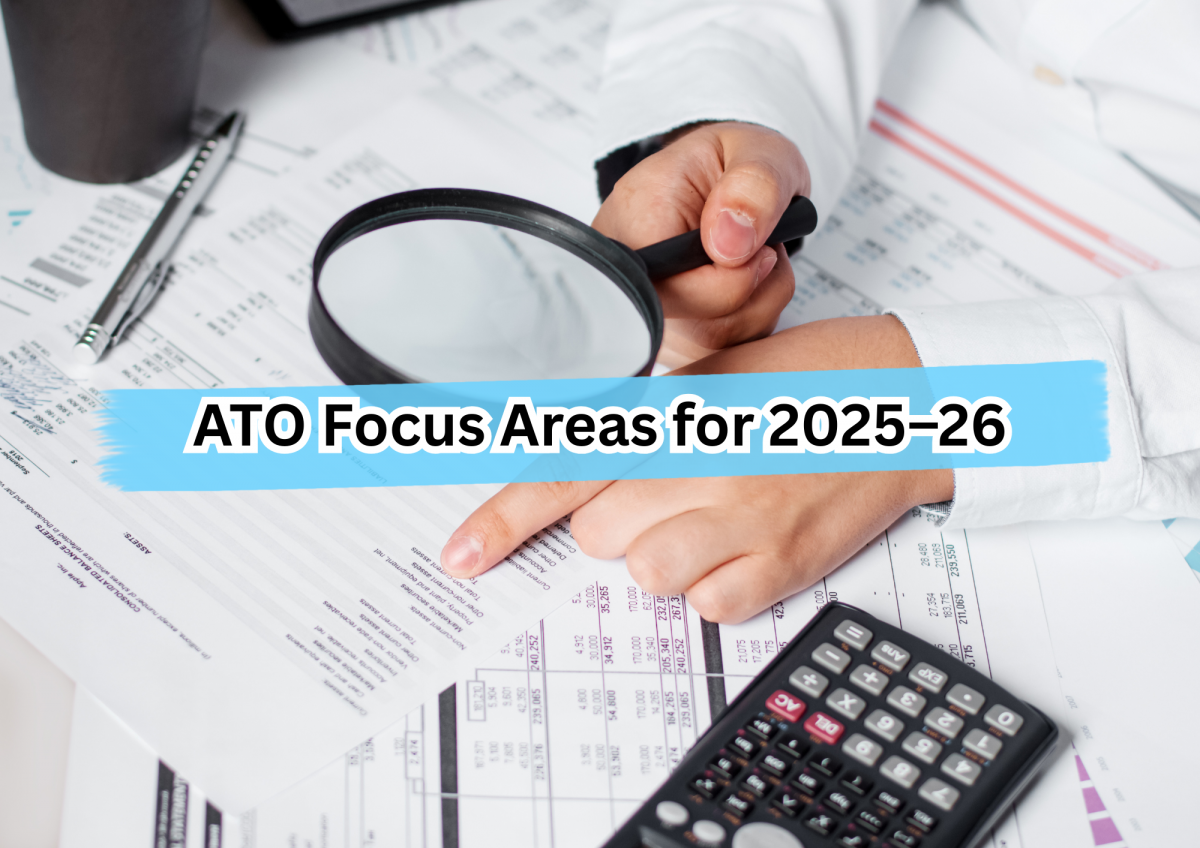If you’ve taken the step to upskill — whether through an MBA, a management program or another postgraduate qualification — you’ve probably wondered whether any of those costs can be claimed at tax time.
For many workers, the answer can be yes, but only when the strict ATO conditions are met. The distinction between a legitimate claim and a non-deductible expense is often quite subtle. If you get your claim right, the tax savings can be substantial. If you get it wrong, you may face an amended assessment and possibly penalties and interest.
Below, we break down the rules using a real example and outline what you should look out for.
Case Study: Sarah’s MBA Journey
Sarah is employed by the Department of Defence and recently completed an MBA through a private education provider. Her employer supported her with a $40,000 study allowance, while her MBA tuition fees came to $18,000. She deferred these fees through the FEE-HELP loan system and reported the study allowance as taxable income.
She now wants to know:
- Can she claim a deduction for her MBA tuition?
- Does using FEE-HELP affect the deductibility?
- Does the employer-funded allowance change the tax outcome?
Understanding the Impact of Your Loan Type
The tax treatment of study costs depends heavily on how the course is funded.
HECS-HELP – no deduction available
Courses offered under Commonwealth supported places (which include most undergraduate degrees and some postgraduate programs) fall under the HECS-HELP system. The tax law specifically blocks any deduction for these tuition amounts — even when you pay upfront, and even when the study is directly relevant to your work.
FEE-HELP – deduction might be available
Full-fee courses, which typically use FEE-HELP, are treated differently. If the study has a strong connection to your current role or income-earning activities, the course fees may be deductible. Only the tuition fees are deductible, not the later FEE-HELP loan repayments.
Practical tip:
Check your statement to confirm whether your enrolment is under HECS-HELP or FEE-HELP. Only FEE-HELP or privately paid fees give rise to potential deductions.
The “Nexus” Test: How the Study Connects to Your Current Role
Once the funding method is clear, the next test is purpose. The ATO only allows deductions when the study maintains or improves skills directly used in your present job, or when the qualification is likely to increase the income you earn in the same role.
If the study is undertaken as a pathway into a new occupation, the deduction will be denied.
A 2024 ATO ruling provides helpful guidance:
- Approved: A retail manager completing an MBA to enhance leadership and business management skills already used in the job.
- Rejected: A salesperson undertaking an MBA with the intention of moving into a consulting career. The link to current duties was too weak.
For Sarah, the key question is whether her MBA subjects — such as strategy, leadership or policy — enhance her existing responsibilities within the Defence department. The fact that her employer provided a study allowance supports relevance but doesn’t automatically guarantee deductibility.
It’s also possible that only parts of a course are sufficiently related. Fees for subjects directly tied to current duties may be deductible, while more general or unrelated modules may not be.
Employer-Funded Allowances and Loan Repayments
The $40,000 allowance Sarah received is treated as taxable income, similar to wages. However, that does not prevent her from claiming eligible self-education deductions for the course fees.
FEE-HELP or HELP loan repayments made in later years are not deductible. Deductions relate to when the tuition expense was incurred, not when the loan is repaid.
How to Approach Your Claim
If you’re considering claiming study expenses, keep these steps in mind:
- Confirm the loan structure – FEE-HELP and private fee payments may be deductible; HECS-HELP never is.
- Keep solid records – Save course outlines, proof of enrolment, job descriptions and emails showing how the study supports your role.
- Claim only what’s tied to your current work – Eligible items might include course fees, textbooks, equipment, and potentially travel.
- Expect possible ATO scrutiny – Large self-education claims are frequently reviewed. If the amounts are significant, consider obtaining a private ruling for certainty.
Final Thoughts
For many employees, postgraduate study — including an MBA — can deliver both professional growth and valuable tax benefits, but only when the course clearly relates to your existing role.
Handled correctly, the tax deductions can be substantial. In Sarah’s case, an $18,000 course could translate into a refund of more than $5,000.
If you are thinking about enrolling in further study, or are unsure about claiming previous expenses, reach out before you lodge. A quick discussion can ensure your next qualification delivers the best possible outcome for both your career and your tax position.
Need Help?
By working with us as your professional tax accountant and mortgage broker, you can be confident that your loans are structured to protect your tax position, maximise deductions, and avoid costly mistakes, giving you greater peace of mind and more control over your financial future.
Pitt Martin Group is a firm of Chartered Accountants, providing services including taxation, accounting, business consulting, self-managed superannuation funds, auditing and mortgage & finance. We spend hundreds of hours each year on training and researching new tax laws to ensure our clients can maximize legitimate tax benefit. Our contact information are phone +61292213345 or email info@pittmartingroup.com.au. Pitt Martin Group is located in the convenient transportation hub of Sydney’s central business district. Our honours include the 2018 CPA NSW President’s Award for Excellence, the 2020 Australian Small Business Champion Award Finalist, the 2021 Australia’s well-known media ‘Accountants Daily’ the Accounting Firm of the Year Award Finalist and the 2022 Start-up Firm of the Year Award Finalist, and the 2023 Hong Kong-Australia Business Association Business Award Finalist.
Pitt Martin Group qualifications include over fifteen years of professional experience in accounting industry, membership certification of the Chartered Accountants Australia and New Zealand (CA ANZ), membership certification of the Australian Society of Certified Practising Accountants (CPA), Registered Australia Tax Agents, certified External Examiner of the Law Societies of New South Wales, Victoria, and Western Australia Law Trust Accounts, membership certification of the Finance Brokers Association of Australia Limited (FBAA), Registered Agents of the Australian Securities and Investments Commission (ASIC), certified Advisor of accounting software such as XERO, QUICKBOOKS, MYOB, etc.
This content is for reference only and does not constitute advice on any individual or group’s specific situation. Any individual or group should take action only after consulting with professionals. Due to the timeliness of tax laws, we have endeavoured to provide timely and accurate information at the time of publication, but cannot guarantee that the content stated will remain applicable in the future. Please indicate the source when forwarding this content.
By Zoe Ma @ Pitt Martin Tax










